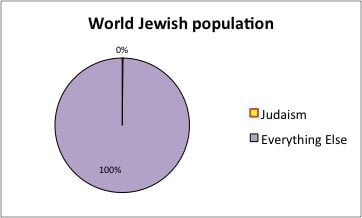Tonight (September 25, 2012), Jews worldwide will begin observing Judaism’s most sacred holiday of the year: Yom Kippur, otherwise known as the Day of Atonement.
Coming ten days after Rosh Hashanah (the Jewish New Year), on the tenth day of the month of Tishrei on the Jewish calendar, Yom Kippur serves as the climactic conclusion of the ten-day period known as the High Holy Days, or the Days of Awe — an annual period set aside for solemn introspection, thoughtful reflection, self-assessment, and repentance for wrongs committed during the previous year.
Those traditional Ten Days of Repentance culminate tonight with the arrival at sunset of Yom Kippur, Judaism’s holiest of holy days.
Since Judaism reckons a day as beginning not at 12:00 midnight but instead at sunset, Yom Kippur will technically begin tonight (September 25) at sunset; it will last all day tomorrow, concluding at sunset tomorrow night (September 26).
Around the world, Jews — including many who are otherwise largely unobservant of religious holidays and practices — will spend the day attending packed synagogue services, engaging in prayer and fasting, repenting of sins, and seeking forgiveness and atonement (as the very name “Day of Atonement” suggests).
Yom Kippur always falls on the tenth day of the month of Tishrei. However, that fixed date on the Jewish religious calendar does not always coincide with September 26 on the secular Western (Gregorian) calendar.
The Jewish lunar calendar counts and calculates its lunar months quite differently, such that there is a certain amount of drift from year to year, relative to the widely-used Gregorian calendar. Last year (2011), for instance, Yom Kippur (10 Tishrei) fell upon October 8; next year (2013), it will occur September 14; the year after that (2014), it will fall upon October 4.
I’d like to take this opportunity to wish my Jewish readers around the globe G’mar Hatimah Tovah! (Hebrew for “May You Be Sealed for a Good Year in the Book of Life,” a traditional Yom Kippur greeting).

